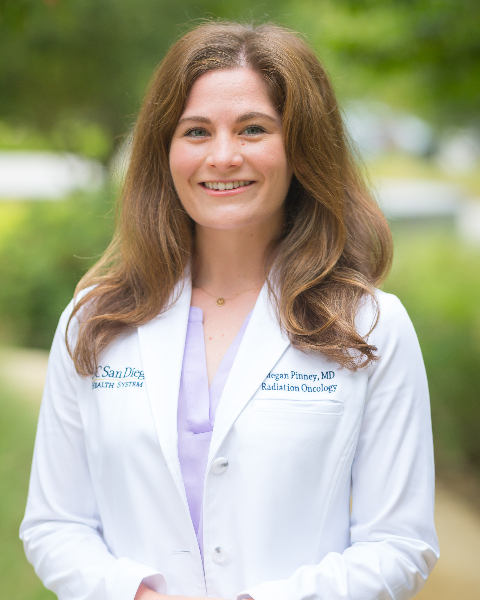QP 08 - Prof Dev 1:Professional Development and Medical Education - Quick Pitch
1045 - Patterns of Contouring Mistakes in the Novice Resident: A Qualitative Analysis to Guide Future Educational Efforts
Tuesday, October 1, 2024
8:20 AM - 8:25 AM ET
Location: Room 158

Megan Orr, MD
UC San Diego Health
La Jolla, CA
Presenter(s)
M. E. Orr1,2, E. A. M. Duran1,2, B. Wang3, M. Yarmand4, L. A. DSouza5, N. Weibel4, E. F. Gillespie6, J. D. Murphy1,2, and M. Sherer1,2; 1Department of Radiation Medicine and Applied Sciences, UC San Diego, La Jolla, CA, 2Center for Health Equity Education and Research, University of California, San Diego, La Jolla, CA, 3Department of Computer Science, University of Washington, Seattle, WA, 4Department of Computer Science and Engineering, UC San Diego, La Jolla, CA, 5Department of Radiation Oncology, Rush University Medical Center, Chicago, IL, 6Department of Radiation Oncology, University of Washington, Seattle, WA
Purpose/Objective(s): Contouring education is a critical component of radiation oncology residency training, as numerous studies link contour variability to adverse patient outcomes. However, there is no standardized curriculum for contouring, and teaching is currently reliant on a 1:1 apprenticeship model. Identifying common patterns of error in target delineation in residents who are new to a disease site can aid in developing new resources for contouring education. We hypothesized that an interactive online educational platform for learners to practice contouring would reveal the common mistakes made by residents before completing disease-site-specific training. Materials/
Methods: The iContour platform displays anonymized DICOM data and allows for input and analysis of user contours in a web-based interface. A randomized trial assessing the efficacy of the platform for contouring education is underway. All participants are completing their first clinical rotation in either the Head/Neck (H+N), Gynecologic (Gyn), or Gastrointestinal (GI) disease sites. As part of the trial, participants complete a baseline contouring assessment within the first 2 weeks of their rotation. We visually reviewed the baseline contouring assessments from the first 11 participants in the study to look for common patterns of error among learners. Participant contours were overlaid onto expert contours of the same case to assist with analysis.
Results: A total of 11 residents participated (median PGY2, range PGY2-5) from 8 U.S.-accredited residency programs across the 3 disease sites (n=3 H+N, n=5 Gyn and n=3 GI). Each participant completed 3 pre-test cases at the start of their rotation, resulting in a total of 33 unique contours. Qualitative visual analysis of the contours revealed several patterns. When contouring a case of anal cancer, all participants undercontoured the elective inguinal lymph node volume, particularly medially. For nasopharyngeal cancer, participants undercovered the intermediate risk clinical target volume (CTV), most often missing the base of skull and/or lateral retropharyngeal nodes. Participants were generally successful at contouring a grossly involved pelvic lymph node for cervical cancer and the “bowel bag” structure. More inconsistency was seen in the parotid gland, with several participants identifying either the superficial or deep lobe but not both.
Conclusion: Our findings suggest several common patterns of errors for novice contours, such as insufficient lymph node and at-risk CTV coverage. Revealing the frequently missed areas at-risk provides a crucial teaching point for learners and highlights the common mistakes to avoid in each disease site. These findings are informative for the design of future interventions to improve contouring education.
Purpose/Objective(s): Contouring education is a critical component of radiation oncology residency training, as numerous studies link contour variability to adverse patient outcomes. However, there is no standardized curriculum for contouring, and teaching is currently reliant on a 1:1 apprenticeship model. Identifying common patterns of error in target delineation in residents who are new to a disease site can aid in developing new resources for contouring education. We hypothesized that an interactive online educational platform for learners to practice contouring would reveal the common mistakes made by residents before completing disease-site-specific training. Materials/
Methods: The iContour platform displays anonymized DICOM data and allows for input and analysis of user contours in a web-based interface. A randomized trial assessing the efficacy of the platform for contouring education is underway. All participants are completing their first clinical rotation in either the Head/Neck (H+N), Gynecologic (Gyn), or Gastrointestinal (GI) disease sites. As part of the trial, participants complete a baseline contouring assessment within the first 2 weeks of their rotation. We visually reviewed the baseline contouring assessments from the first 11 participants in the study to look for common patterns of error among learners. Participant contours were overlaid onto expert contours of the same case to assist with analysis.
Results: A total of 11 residents participated (median PGY2, range PGY2-5) from 8 U.S.-accredited residency programs across the 3 disease sites (n=3 H+N, n=5 Gyn and n=3 GI). Each participant completed 3 pre-test cases at the start of their rotation, resulting in a total of 33 unique contours. Qualitative visual analysis of the contours revealed several patterns. When contouring a case of anal cancer, all participants undercontoured the elective inguinal lymph node volume, particularly medially. For nasopharyngeal cancer, participants undercovered the intermediate risk clinical target volume (CTV), most often missing the base of skull and/or lateral retropharyngeal nodes. Participants were generally successful at contouring a grossly involved pelvic lymph node for cervical cancer and the “bowel bag” structure. More inconsistency was seen in the parotid gland, with several participants identifying either the superficial or deep lobe but not both.
Conclusion: Our findings suggest several common patterns of errors for novice contours, such as insufficient lymph node and at-risk CTV coverage. Revealing the frequently missed areas at-risk provides a crucial teaching point for learners and highlights the common mistakes to avoid in each disease site. These findings are informative for the design of future interventions to improve contouring education.
